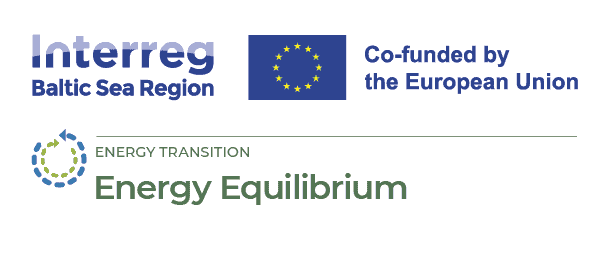
The Energy Equilibrium Project's Impact on the Future of Sustainable Municipal Energy Planning in South Ostrobothnia, Finland
07 January 2024
In the EU and national energy debate, both consumers’ and society’s efforts to achieve energy efficiency and reduce emissions (CO2) are highlighted. At EU level significant measures have been launched to promote these objectives. Improving energy efficiency and storage will lead to cost savings, while reducing emissions will improve air quality and combat the global greenhouse effect at the same time. It can be concluded that general developments in the energy sector, both political and legislative support and fiscal guidance, will also have a significant impact on municipal activities and procurement now and in the future.
With energy prices on the market fluctuating widely, even on an hourly basis, there is a high demand for energy storage systems. Electricity and heat energy storage can be used to smooth out cost spikes caused by price fluctuations: when energy prices are high, energy storage loaded at a lower price can be used. There may also be a situation where no energy is available from the energy source in use. Such situations include, for example, a power plant failure or an interruption in electricity transmission. In such cases, if the energy required has been pre-charged into batteries or storage when it was available, it can be used in a situation of energy shortage.
Both municipalities and businesses in Finland are in need to develop their energy use in order to find cost-saving and emission-reducing solutions. Many municipalities need to re-plan their energy supply for the future, as well as companies also need to develop their own business to meet future needs and market demand. The Energy Equilibrium project aims to develop an interactive and easy-to-use tool to support decision-making by municipalities and energy suppliers. The tool can be used to enhance the development of local renewable energy action plans, with a focus on promoting energy storage infrastructure.
Thermopolis Oy cooperates with municipalities in the South Ostrobothnia region of Finland. This cooperation largely concerns the energy solutions used and considered by the municipalities, as well as the maintenance and development of their properties. Partly through this contact point, a national stakeholder group for the Energy Equilibrium project has been assembled. In addition, people who have worked with Thermopolis Ltd on the project have been consulted. Stakeholders are involved in municipal energy production, maintenance of municipal buildings (especially energy), development of municipal buildings and other energy development projects.
The Energy Equilibrium project involves 12 partners from six Baltic Sea countries (Germany, Finland, Latvia, Lithuania, Poland, Sweden and Finland). The project will run for three years from 2023-25 and has a total budget of €2 million. The project is co-financed by Interreg BSR and represented in Finland by Thermopolis Oy.
Project information in short:
Project name: Energy Equilibrium- Energiatasapaino
Project duration: 1.1.2023 – 31.12.2025
Budget in Finland: 200 000 €
This article was prepared by Sauli Jäntti.
Photo by Jamo Images from Pexels





